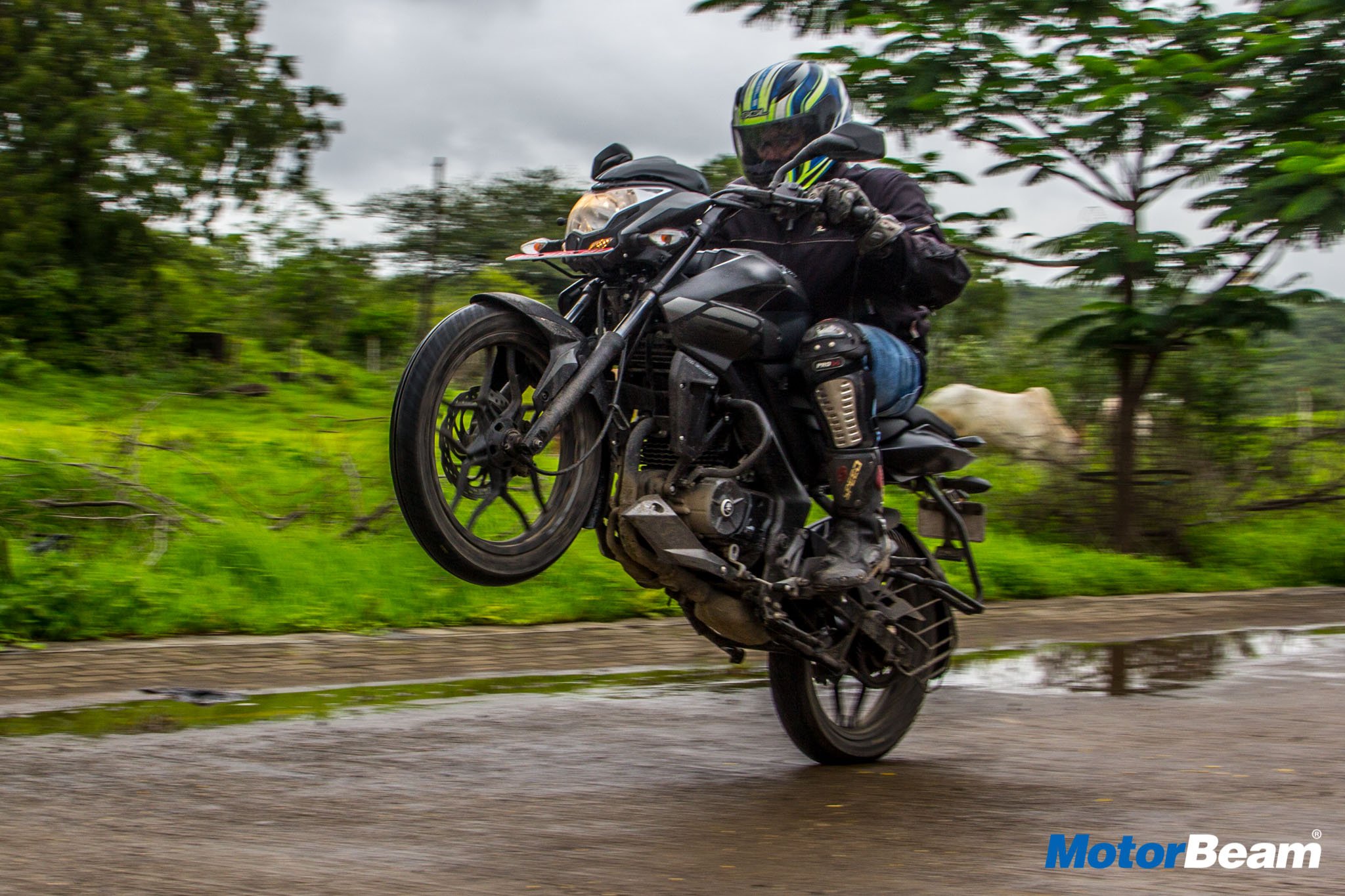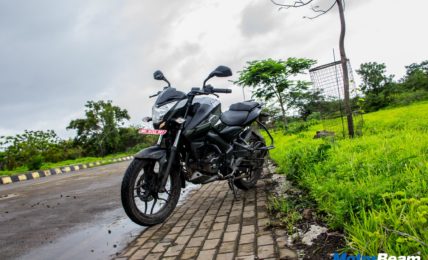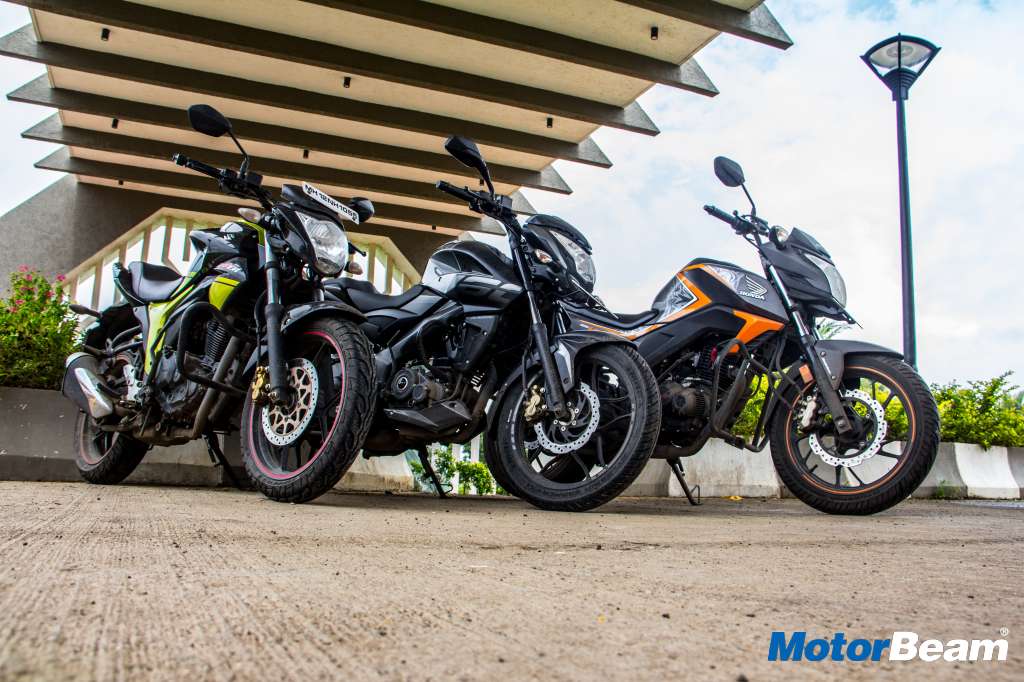Perimeter frame gives the NS 160 much better poise than the Pulsars of yore
Riding Dynamics – Underpinned by the same Perimeter frame as the NS 200, this motorcycle offers decent levels of handling and on-road dynamics. Decent, I repeat, because the NS 200 is decidedly more superior in these aspects due to its fatter tyres, larger swingarm, bigger brakes and fatter front forks. The 142 kg Pulsar 160 NS is stable on straights and handles well for the most part but doesn’t inspire the same confidence on corners as its rivals mainly because of the tyres (80 and 110 section at the front and rear respectively). Even though they offer a good amount of grip, they look absolutely horrendous on what is a positioned as a premium motorcycle. However, the suspension is tuned perfectly for our road conditions and the NS 160, riding on front telescopic and rear monoshock setup, takes most road irregularities in its stride. The brakes do a decent job of shedding speeds and despite its small size, the 240 mm front disc offers a progressive feel and good stopping power. A rear disc version is also on cards but is nowhere to be seen yet.
Even the inferior hardware doesn’t come in between ‘Pulsar’ and ‘Fun’!
Verdict – With the launch of the 2017 Pulsar NS 160, Bajaj has done a Honda! Not because of the refinement but rather the strategy. Wider tyres have become a norm in the small displacement premium motorcycle segment. A trend which was started by the top-selling FZ and followed by the promising Gixxer. However, Honda always looks at things from a practical viewpoint and doesn’t go out of the way to follow the herd. Bajaj Auto has done the same thing by stripping down the NS 160’s mechanicals way too much in the interest of cost savings and practicality. Like Honda, they have robbed its street-fighter of the basic segment characteristics which really won’t go down well with the target audience. Beauty of the NS 160 is only skin-deep and the toned down hardware goes on solidify the fact that this one isn’t a true-blue NS 200 derivative!
176 mm of ground clearance is enough to tackle diverse Indian road conditions
What’s Cool
* Looks absolutely brilliant in Laser Edged colours
* Most sorted-out ergonomics and ride quality
* Engine refinement can easily put some Japanese rivals to shame
* Impressive mid-range grunt
* Fuel efficient and practical for city riding
What’s Not So Cool
* Not as engaging to ride as its rivals
* Severely toned down mechanicals as compared to NS 200
* Skinny tyres by segment standards
* Notchy gearshift quality
* Small front disc, rear drum brake
Alternatives: Yamaha FZ V2, Suzuki Gixxer, Honda CB Hornet 160R, TVS Apache 160
In spite of a few flaws, the NS 160 comes across as a propitious product
2017 Pulsar NS 160 Specifications
* Engine: 160.3cc, Oil-Cooled, 4-Stroke, Single-Cylinder
* Power: 15.28 BHP @ 8500 RPM
* Torque: 14.6 Nm @ 6500 RPM
* Transmission: 5-speed Manual
* 0-100 km/hr: 16.93 seconds (VBOX)
* Top Speed: 114 km/hr
* Fuel Consumption: 44-48 km/l
* Fuel Type: Petrol
* Frame: Perimeter
* Suspension: Telescopic Forks (Front) Nitrox Mono Shock Absorber (Rear)
* Tyres: 80/100/17 (Front), 110/80/17 (Rear)
* Brakes: 240 mm Disc (Front), 130 mm Drum (Rear)
2017 Pulsar NS 160 Dimensions
* Length x Width x Height: 2012 mm x 803.5 mm x 1060 mm
* Wheelbase: 1363 mm
* Ground Clearance: 176 mm
* Seat Height: 805 mm
* Fuel Tank Capacity: 12-litres
* Kerb Weight: 142 kgs




